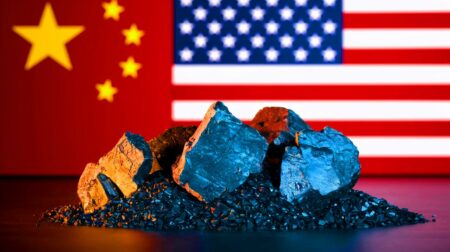| IN A NUTSHELL |
|
The escalation of trade tensions between the United States and China has led to significant developments in the electric vehicle (EV) industry. The latest move by China to restrict the export of certain rare earth metals has sent ripples across global markets, particularly affecting the supply chain for EV batteries. In response, U.S.-based companies are exploring innovative solutions to mitigate these challenges, such as recycling used batteries. One notable initiative is the collaboration between shared mobility company Lime and Redwood Materials, founded by Tesla co-founder JB Straubel, to recycle batteries and ensure a sustainable supply of critical minerals.
The Strategic Importance of Battery Recycling
The importance of battery recycling cannot be overstated in the current geopolitical climate. Batteries are the most expensive component of electric vehicles, often accounting for over 40 percent of total costs. The reliance on China for rare earth minerals has become a strategic vulnerability for the U.S. As China tightens its grip on rare earth supplies, the U.S. must diversify its sources. While some minerals can be sourced from other countries or developed domestically, certain elements are predominantly available in China.
Recycling offers a promising solution to this predicament. The U.S. has previously imported large quantities of batteries, and these contain the necessary minerals in substantial amounts. Recycling these batteries can help alleviate potential shortages. Unlike household plastics, the high value of rare earth metals makes recycling financially sustainable. Companies like Redwood Materials are leading the way by recycling batteries to extract essential elements, thus creating new, high-quality batteries that can be reused across various sectors.
Redwood Materials’ Role in the Recycling Revolution
Redwood Materials, based in Nevada, has emerged as a key player in the battery recycling industry. In 2024 alone, the company successfully recycled 20 gigawatt-hours of battery material from various sources, including old cars and scooters. This amount was sufficient to produce 250,000 electric vehicles. This achievement highlights the potential for recycling to play a pivotal role in meeting the growing demand for EVs.
Redwood’s expertise in recovering materials from used batteries has made it a valuable partner for companies like Lime, which face challenges with excess and outdated inventory. Lime’s cycles and scooters, often discarded in public spaces after their batteries reach their lifespan of 500 cycles, can now be collected and recycled efficiently. This partnership not only addresses logistical issues but also reinforces Lime’s commitment to sustainable, environmentally friendly transportation solutions.
Implications of U.S.-China Trade Tensions on the EV Industry
The ongoing trade tensions between the U.S. and China have profound implications for the electric vehicle industry. The U.S. has imposed tariffs of 125 percent on Chinese exports, prompting China to retaliate with restrictions on rare earth metal exports. This trade war has underscored the need for the U.S. to onshore manufacturing capacities and secure its supply chains. Battery materials are a critical component of this strategy, as they are essential for various manufacturing sectors.
The collaboration between Lime and Redwood Materials exemplifies how companies can adapt to geopolitical challenges by investing in innovative solutions. By recycling used batteries, the U.S. can reduce its dependency on Chinese imports and foster a more resilient and sustainable EV industry. This shift not only strengthens national security but also promotes economic growth and environmental sustainability.
AI Outperforms Chinese Pilots in High-Stakes Aerial Combat: A Glimpse into the Future of Warfare
The Future of Battery Recycling and Sustainable Mobility
The partnership between Lime and Redwood Materials is a testament to the potential of battery recycling in promoting sustainable mobility. As shared mobility services continue to grow, addressing the environmental impact of discarded batteries becomes increasingly important. By leveraging Redwood’s expertise in battery recovery, Lime is taking significant steps toward reducing its carbon footprint and enhancing its sustainability credentials.
This collaboration is indicative of a broader trend in the industry, where companies are recognizing the value of recycling in creating a circular economy. As the demand for electric vehicles continues to rise, the need for innovative recycling solutions will only become more critical. Companies that invest in such technologies today are likely to reap substantial benefits in the future, both financially and environmentally.
The challenges posed by the U.S.-China trade tensions have spurred a wave of innovation and collaboration in the electric vehicle industry. The partnership between Lime and Redwood Materials highlights the importance of battery recycling as a strategic response to geopolitical uncertainties. As the industry evolves, will other companies follow suit and embrace sustainable practices to secure their future in the competitive EV market?
Did you like it? 4.5/5 (29)








Wow, battery recycling sounds like a game-changer! Can other countries follow this model too? 🌍